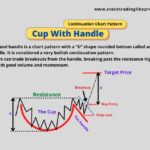There is a popular classic expression in Technical Analysis – “The trend is your friend”.
How is trend your friend in trading?
Let’s find out…..
Technical Analysis assumes that prices move in trends.
A trend is a series of rising prices and declining prices over a span of time.
A visual inspection is enough to easily gauge you the direction of the trend.
Here’s how a typical trend looks like when prices rises up and falls down in a trend.

So, what’s a trendline?
Trend lines are an important aspect of technical analysis for price trend identification. It is also key for visual representation of price support and resistance in any time frame.
Simply put, a trendline is a straight line connecting two or more price-points (pivot highs or pivot lows) to show prevailing direction of price.

Type of Trendline
A trendline can either be uptrend or downtrend.
Uptrend Line is a series of rising higher lows in a price movement connected through a line.

Downtrend Line is a series of declining lower highs in a price movement connected through a line.

In the above example, we can see rising price movement with higher highs (HH) and higher lows (HL) forming an uptrend. And a Uptrend line connects the rising higher lows.
Similarly in case of downtrend, we see falling Lower Highs (LH) and Lower Lows (LL). And a Downtrend line connects the declining lower highs.
Here’s a real life example of CNX IT in a strong uptrend

And here’s real like example of Tata Motors in a strong downtrend

How to draw a trendline?
The general rule in technical analysis is that it takes two points to draw a trend line and the third point confirms the validity.
To draw a Trend Line in an uptrend, 2 or more lows must be connected by a straight line.
Similarly, for downtrend, 2 or more highs must be connected by a straight line.
Trend lines may be horizontal or slanted. It needs to be ensured that the trend line angle is not too steep. Ideally it should be slanted at 45 degree.
It is not always possible to draw a trend line in every chart.
When it cannot be done, the trend line should not be forcefully drawn. Ideally, you should wait for at least two highs or lows to form to draw a trend line.
How are trendlines used by traders?
Trendlines are used by all types of traders.
Let’s understand why is it so important for them and how they are used in trading in many ways.
1. Trend lines act as support and resistance
We see major trading activity around key price points which form the uptrend or downtrend.
Therefore, Trend line acts a major Demand or Supply Zone for traders.
Uptrend lines act as support. As long as prices remain above the trend line, the uptrend is considered solid and intact. A break below the uptrend line indicates possibility of price trend to change direction.
Downtrend lines act as resistance and a break above the negative sloping downtrend indicates price trend to change direction.
2. Trend lines as channels
Two trend lines running parallel can form a channel.
If a stock price is moving between these two trend lines, then a basic strategy commonly used by traders is to buy a stock at lower trendline (support) and sell at higher trendline (resistance)
And if bearish, short at higher trendline and cover the short at lower trendline.
3. Trend lines are also majorly used by traders to time their entry and exit.
When price breaks an existing trend line, it shows that the trend might fail and a trader can think to exit their positions.
Or, they may consider trading in the opposite direction to the existing trend.
4. Trend lines are best used with other Trend Following Indicators to ride on existing trend
Pro Traders use popular Trend following Indicators like Moving Averages to catch the existing trend wave and ride on it.
A very popular strategy is Trend Trading Strategy which uses 20 and 50 SMA.
5. Trend lines are used along with important price patterns like Head and shoulder, Double Top or Double Bottom etc.






